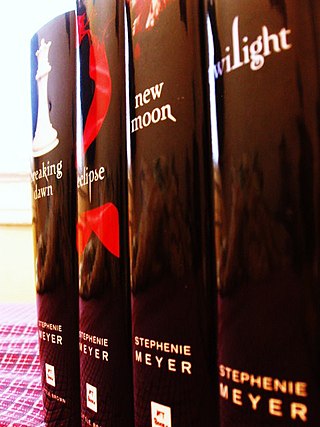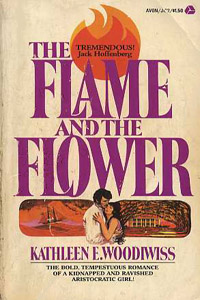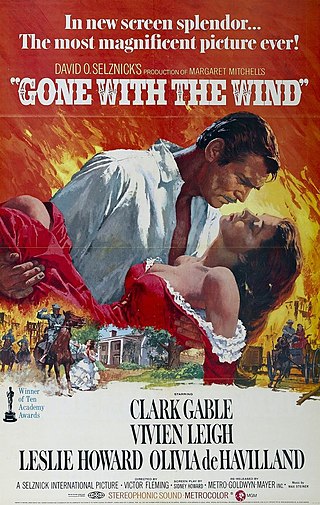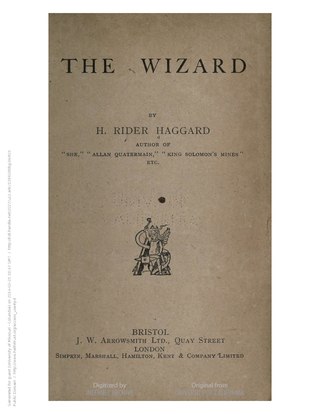Romantic comedy is a subgenre of comedy and slice of life fiction, focusing on lighthearted, humorous plot lines centered on romantic ideas, such as how true love is able to surmount most obstacles. In a typical romantic comedy, the two lovers tend to be young, likeable, and seemingly meant for each other, yet they are kept apart by some complicating circumstance until, surmounting all obstacles, they are finally united. A fairy-tale-style happy ending is a typical feature.
A first-person narrative is a mode of storytelling in which a storyteller recounts events from that storyteller's own personal point of view, using first-person grammar such as "I", "me", "my", and "myself". It must be narrated by a first-person character, such as a protagonist, re-teller, witness, or peripheral character. Alternatively, in a visual storytelling medium, the first-person perspective is a graphical perspective rendered through a character's visual field, so the camera is "seeing" out of a character's eyes.

Scientific romance is an archaic, mainly British term for the genre of fiction now commonly known as science fiction. The term originated in the 1850s to describe both fiction and elements of scientific writing, but it has since come to refer to the science fiction of the late nineteenth and early twentieth centuries, primarily that of Jules Verne, H. G. Wells and Arthur Conan Doyle. In recent years the term has come to be applied to science fiction written in a deliberately anachronistic style as a homage to or pastiche of the original scientific romances.

A romance novel or romantic novel generally refers to a type of genre fiction novel which places its primary focus on the relationship and romantic love between two people, and usually has an "emotionally satisfying and optimistic ending." Precursors include authors of literary fiction, such as Samuel Richardson, Jane Austen, and Charlotte Brontë.
Harem is a genre of light novels, manga, anime,video games originating in Japan in the 1970s but exploding late 1980s and 1990s with dating simulator games and focused on polygynous or polyandrous relationships, where a protagonist is surrounded by three or more androphilic/gynephilic suitors, love interests and/or sexual partners. Harem works are frequently comedies that rely on self-insertion protagonists allowing the audience to project themselves unto, and on having relatable and interesting ensemble cast of characters. A story featuring a heterosexual male or homosexual female protagonist paired with an all-female/yuri harem series is informally referred to as a female harem or seraglios, while a heterosexual female or gay male protagonist paired with an all-male/yaoi harem series is informally referred to as a male harem, reverse harem, or gyaku hāremu. Although originating in Japan, the genre later inspired variants in Western media.
Narration is the use of a written or spoken commentary to convey a story to an audience. Narration is conveyed by a narrator: a specific person, or unspecified literary voice, developed by the creator of the story to deliver information to the audience, particularly about the plot: the series of events. Narration is a required element of all written stories, presenting the story in its entirety. However, narration is merely optional in most other storytelling formats, such as films, plays, television shows, and video games, in which the story can be conveyed through other means, like dialogue between characters or visual action.

The Female Man is a feminist science fiction novel by American writer Joanna Russ. It was originally written in 1970 and first published in 1975 by Bantam Books. Russ was an ardent feminist and challenged sexist views during the 1970s with her novels, short stories, and nonfiction works. These works include We Who Are About To..., "When It Changed", and What Are We Fighting For?: Sex, Race, Class, and the Future of Feminism.

Paranormal romance is a subgenre of both romantic fiction and speculative fiction. Paranormal romance focuses on romantic love and includes elements beyond the range of scientific explanation, from the speculative fiction genres of fantasy, science fiction, and horror. Paranormal romance range from traditional romances with a paranormal setting to stories with a science fiction or fantasy-based plot with a romantic subplot included. Romantic relationships between humans and vampires, shapeshifters, ghosts, and other entities of a fantastic or otherworldly nature are common.

Amatory fiction is a genre of British literature that became popular during the late 17th century and early 18th century, approximately 1660–1730. It was often spread throughout coteries, published while trying to remain true to the writer's vision without criticism. Amatory fiction predates, and in some ways predicts, the invention of the novel and is an early predecessor of the romance novel. Indeed, many themes of the contemporary romance novel were first explored in amatory fiction. The writing of amatory fiction work was dominated by women, and it was considered to have mainly female readers; but it is assumed that men read these novels as well. As its name implies, amatory fiction is preoccupied with sexual love and romance. Most of its works were short stories.
Fiction writing is the composition of non-factual prose texts. Fictional writing often is produced as a story meant to entertain or convey an author's point of view. The result of this may be a short story, novel, novella, screenplay, or drama, which are all types of fictional writing styles. Different types of authors practice fictional writing, including novelists, playwrights, short story writers, radio dramatists and screenwriters.

Historical romance is a broad category of mass-market fiction focusing on romantic relationships in historical periods, which Walter Scott helped popularize in the early 19th century.
Contemporary romance is a subgenre of romance novels, generally set contemporaneously with the time of its writing. The largest of the romance novel subgenres, contemporary romance novels usually reflect the mores of their time. Heroines in the contemporary romances written prior to 1970 usually quit working when they married or had children, while those novels written after 1970 usually have, and keep, a career. As contemporary romance novels have grown to contain more complex plotting and more realistic characters, the line between this subgenre and the genre of women's fiction has blurred.
Young adult romance literature is a genre of books written for teenagers. As defined by Romance Writers of America, a romance novel consists of a central love story and an emotionally satisfying ending. Early young adult romances feature a teenage protagonist, who is typically female, white, and middle-class, while books in the twenty-first century include a wider variety of protagonist.

In film and television, drama is a category or genre of narrative fiction intended to be more serious than humorous in tone. The drama of this kind is usually qualified with additional terms that specify its particular super-genre, macro-genre, or micro-genre, such as soap opera, police crime drama, political drama, legal drama, historical drama, domestic drama, teen drama, and comedy-drama (dramedy). These terms tend to indicate a particular setting or subject matter, or they combine a drama's otherwise serious tone with elements that encourage a broader range of moods. To these ends, a primary element in a drama is the occurrence of conflict—emotional, social, or otherwise—and its resolution in the course of the storyline.

The Wizard is a novel by Henry Rider Haggard, first published by Longmans, Green, and Co., in 1896. The Wizard is one of the many examples of imperialist literature. According to Rebecca Stott, author of the article “The Dark Continent: Africa as Female Body in Haggard’s Adventure Fiction,” Haggard's fiction is still popular today and attempts to expose a “cultural and historical definition of white masculinity at its most rugged and its most terrified.”
Danmei is a Chinese genre of literature and other fictional media that features romantic relationships between male characters. Danmei is typically created by and targeted towards a heterosexual female audience. While danmei works and their adaptations have achieved widespread popularity in China and globally, their legal status remains murky due to Chinese censorship policies. The female same-gender counterpart to danmei is known as bǎihé, which is an orthographic reborrowing of the Japanese word yuri, but it is not as well known or popular as danmei.
Western Romance literature denotes a genre subset of Romance literature, sometimes referred to as cowboy romance. Works within this category typically adhere to the characteristics of Romance but take place in a western setting, frequently the American frontier. Though often historical, the genre is not restricted to romantic works set in the period of American settlement but extends to contemporary romantic works that centre around cowboys or other tropes of the western genre.

The type of romance considered here is mainly the genre of novel defined by the novelist Walter Scott as "a fictitious narrative in prose or verse; the interest of which turns upon marvellous and uncommon incidents", in contrast to mainstream novels which realistically depict the state of a society. These works frequently, but not exclusively, take the form of the historical novel. Scott's novels are also frequently described as historical romances, and Northrop Frye suggested "the general principle that most 'historical novels' are romances". Scott describes romance as a "kindred term", and many European languages do not distinguish between romance and novel: "a novel is le roman, der Roman, il romanzo".








